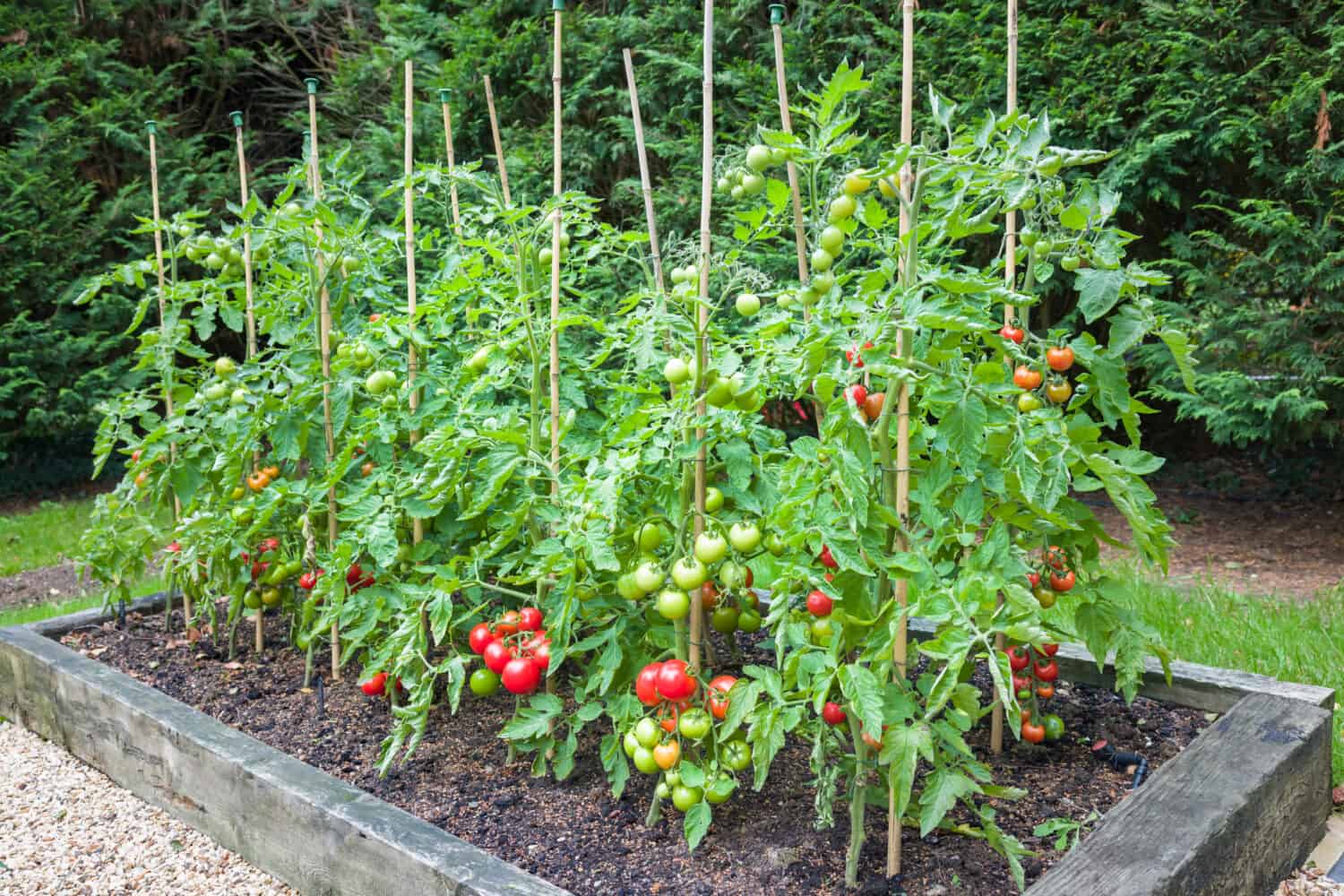From the urban jungles of Kansas City to the rolling hills of the Ozarks, Missouri has the perfect climate for growing tomatoes. Though there are a couple of ways to go about planting these delicious summer fruits in your garden, knowing the ideal time to plant your crop will reap the biggest and most luscious harvest. So, grab your trowel and your gardening gloves as we dig into the ideal timing plus four helpful tips for growing tomatoes in Missouri.
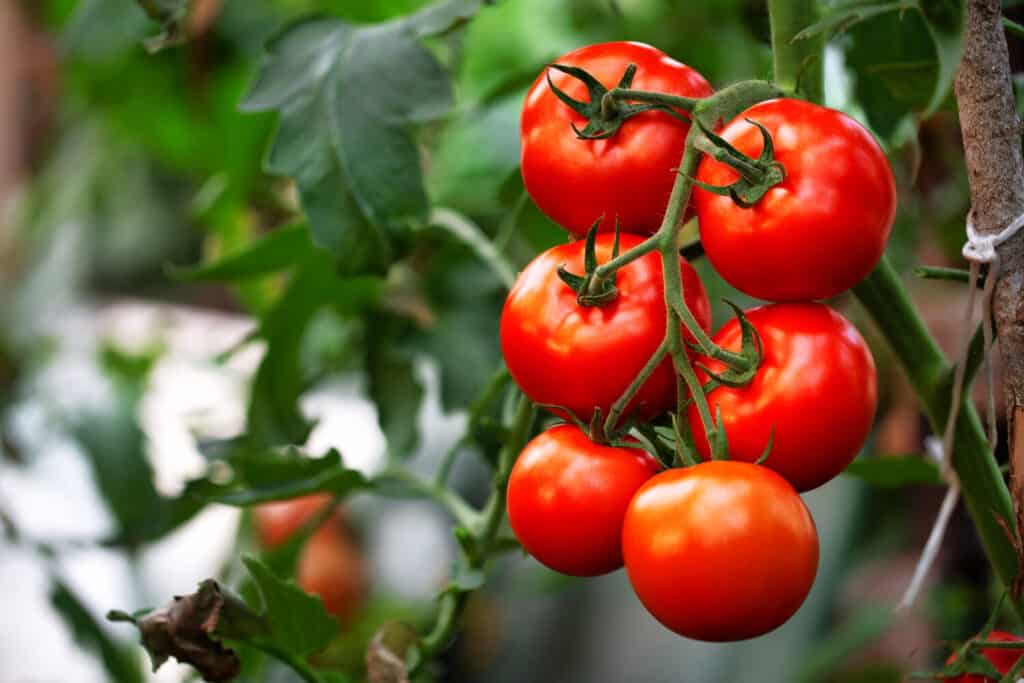
From the urban jungles to the rolling hills, Missouri has the perfect climate for growing tomatoes.
©eugenegurkov/Shutterstock.com
USDA Growing Zones
USDA Growing Zones, also known as USDA Plant Hardiness Zones, is a standardized system that divides geographic areas based on their average minimum winter temperatures. These zones help gardeners and farmers select plants that are most likely to thrive under their specific climate conditions. The lower the zone number, the colder the average winter temperatures in that area. Missouri, located in the U.S. Midwest, spans a range of USDA Plant Hardiness Zones, from 5b-7b due to its diverse topography and expansive latitude:
- The Northern quarter of the state, including the towns of St. Joseph and Kirksville, is in Growing Zone 5B
- The Central part of Missouri, including the state capital, Jefferson City and Kansas City are in Growing Zone 6A.
- Carthage, Springfield, and Farmington, in the South-Central part of the state, comprise Growing Zone 6B
- The town of Poplar Bluff and the area surrounding it are classified as USDA Growing Zone 7A
- The most Southern part of Missouri’s bootheel, including the towns Cardwell and Reves, are in the warmest USDA Growing Zone in the state, Zone 7B.
These zone designations are based on historical data. Average minimum winter temperatures can be subject to slight variations. Websites abound that can help you determine when to expect the last frost in your zone. So, why is it important to know the last frost in my area?
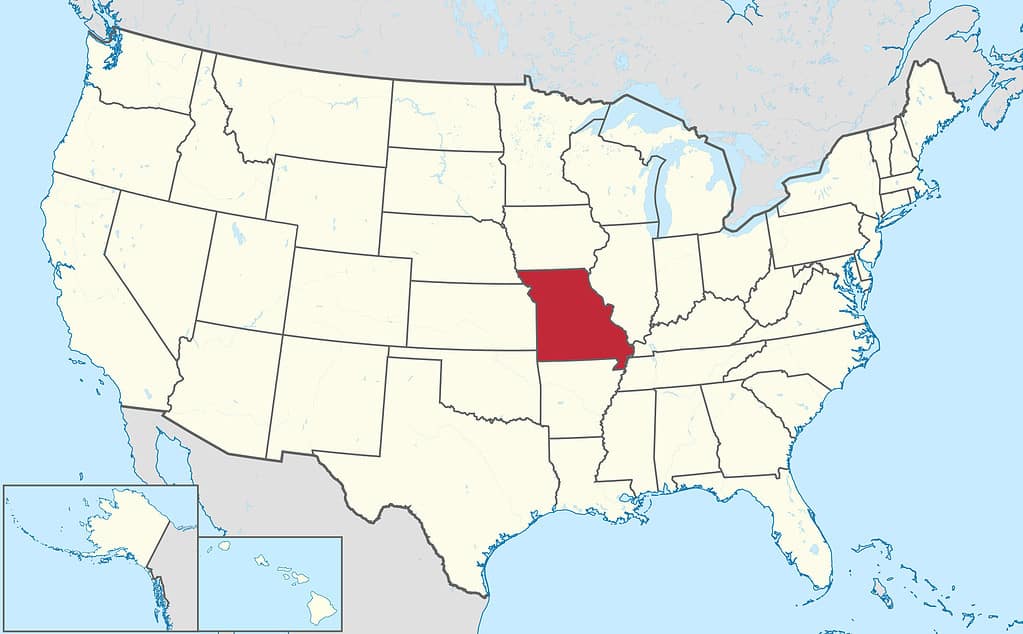
Missouri, located in the U.S. Midwest, spans a range of USDA Plant Hardiness Zones, from 5b-7b.
Ideal Timing
The ideal time to plant tomatoes outdoors is after the danger of frost has passed. Tomatoes are sensitive to cold temperatures and frost can damage or kill young tomato plants. The date of the last frost will vary depending on your specific location. However, being attentive to the forecast, as well as nature’s signals, can help you determine when it is safe to plant your tomatoes. Once the danger of frost has passed and the soil has warmed up, you can transplant your tomato seedlings or bedding plants into the garden. Soil temperature is important for successful transplanting. A soil temperature of 60°F (15.5°C) or warmer ensures that your plants will survive. Tomatoes thrive in warm temperatures. Look for daytime temperatures above 70°F (21°C) for optimal growth. Cold snaps or sudden drops in temperature can stress the plants and slow their growth.
Starting From Seed vs. Purchasing Bedding Plants
Whether you start with bedding plants or grow your own plants from seeds depends on a variety of factors, including your experience, goals, and available time. Each option has its advantages and considerations. Purchasing bedding plants can save several weeks of growing time. Buying bedding plants from a reputable source, allows you to know exactly what variety you’re getting. Saving seeds from a favorite tomato plant won’t always result in growing the exact same type of tomato. This is because tomatoes are open-pollinated plants, and their seeds can be influenced by cross-pollination from other tomato varieties.
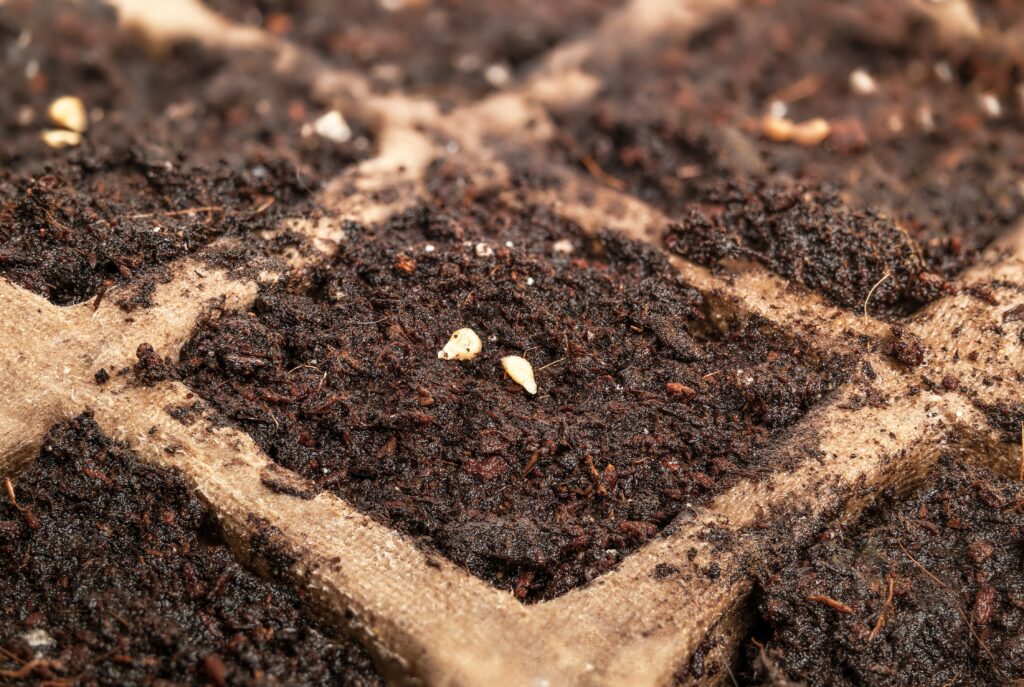
You can start tomato seeds indoors six to eight weeks before the last spring frost.
©sophiecat/Shutterstock.com
Bedding plants are already established. However, they are more expensive than growing from seeds, especially if you are buying a significant number of plants. Starting plants from seeds allows you access to a much broader range of tomato varieties than are typically available at your local garden center. However, growing tomatoes from seed requires more time and attention. You’ll need to start seeds indoors, care for the seedlings, and transplant them when conditions are right.
Both options have their merits, and the choice ultimately depends on your preferences and circumstances. If you’re new to gardening or want a convenient and predictable option, starting with bedding plants might prove the better alternative. If you enjoy the process, desire a wider selection, and have the time and enthusiasm to nurture tomato seedlings, growing from seeds can be rewarding and cost-effective.
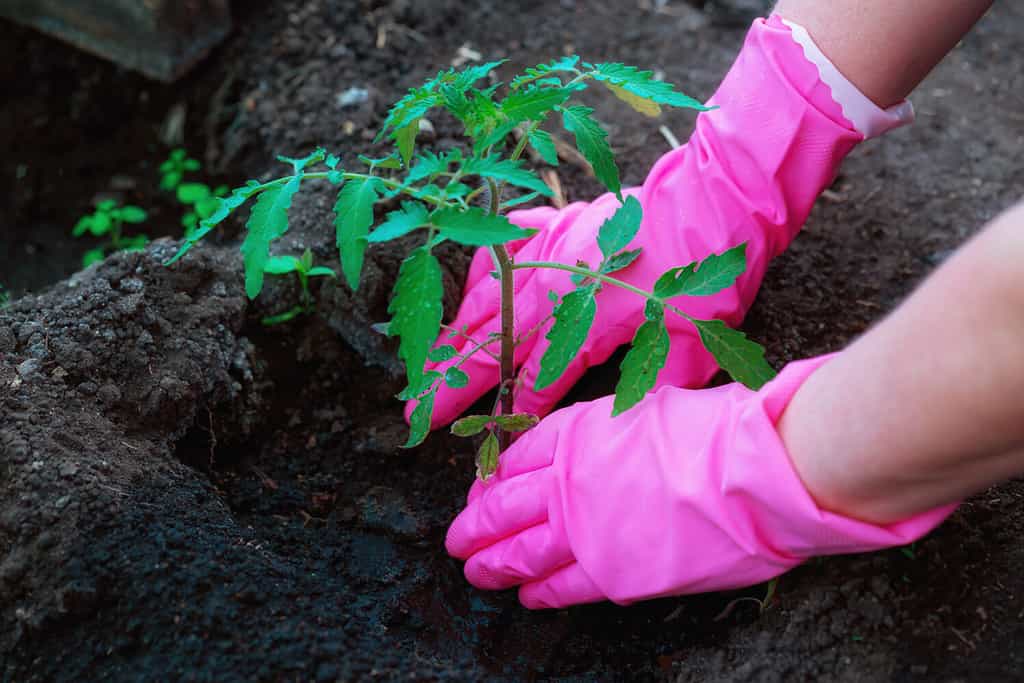
Whether you use bedding plants or seeds depends on a variety of factors, including experience and goals.
©Bestkadr/Shutterstock.com
Growing Tomatoes in Missouri: 4 Helpful Tips
1. Adequate Support
Growing tomatoes is a fun and rewarding summer pastime. In order to ensure the most fruitful harvest, consider the following tips. Provide your tomatoes with adequate support. Tomatoes are vining plants that can become quite heavy as they bear fruit. Providing proper support prevents the plants from sprawling on the ground, keeps the fruit off the soil, and improves air circulation around the foliage. Stakes, cages, trellises, and fencing are used to support the plants. Regular pruning to remove excessive foliage, aka suckers, allows the plant to direct more energy into fruit production. Focus on removing the suckers (the small shoots that develop in the crotch between the main stem and branches) to encourage healthier growth and better fruiting.

Stakes, cages, trellises, and fencing are used to support tomato plants.
©knelson20/Shutterstock.com
2. Mulching
Tomatoes require consistent moisture to grow well, but they don’t like to be waterlogged. Keep the soil consistently moist, especially during the flowering and fruiting stages. Mulching around the base of the plants helps retain soil moisture, prevent weed growth, and regulate soil temperature. Use organic mulch like straw, grass clippings, or compost to create a protective layer over the soil. Properly mulching your tomatoes will reduce the amount of water necessary to produce the largest harvest.
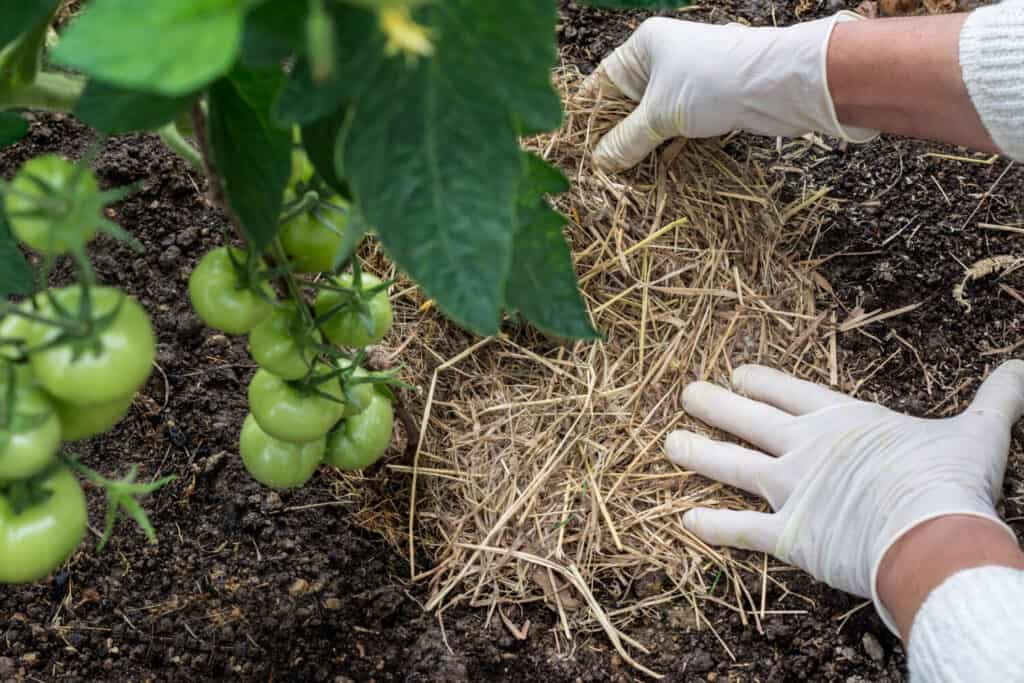
Use organic mulch like straw, grass clippings, or compost to create a protective layer over the soil.
©Jurga Jot/Shutterstock.com
3. Feeding and Fertilizing
Tomatoes are heavy feeders that require ample nutrients to produce healthy foliage and abundant fruit. Use a balanced fertilizer that is higher in phosphorus (for fruiting) and potassium. Too much nitrogen can result in excessive foliage growth at the expense of fruit production. Follow the recommended dosage on the fertilizer package and avoid over-fertilizing, as it can lead to imbalanced growth. Many tomato growers incorporate banana peels into their planting substrate. Others add compost or well-cured manure into the soil before planting to improve its nutrient content.
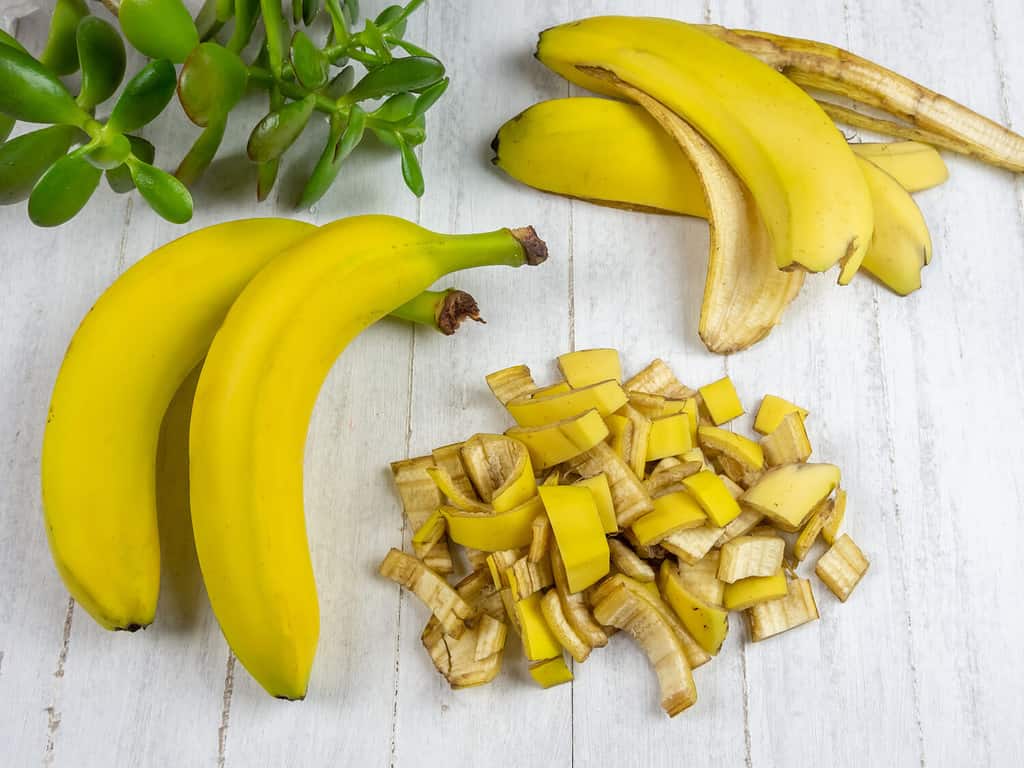
Many tomato growers incorporate banana peels into their planting substrate.
©Natalya_Maisheva/Shutterstock.com
4. Proper Spacing
Proper spacing between tomato plants allows for adequate air circulation. Adequate air circulation helps prevent the development and spread of and fungal diseases like blight and mildew. When plants don’t have enough space humidity levels increase, creating a favorable environment for disease-causing pathogens. Good air circulation allows foliage to dry more quickly after rainfall or irrigation, reducing the risk of disease establishment. Tomato flowers need to be pollinated to produce fruit. Improved air circulation ensures that pollinators like bees and other insects can easily access the flowers. Providing enough space between tomato plants allows sunlight to penetrate the entire plant, promoting even growth and fruit ripening. Given sufficient space and proper airflow, tomato plants will grow vigorously.
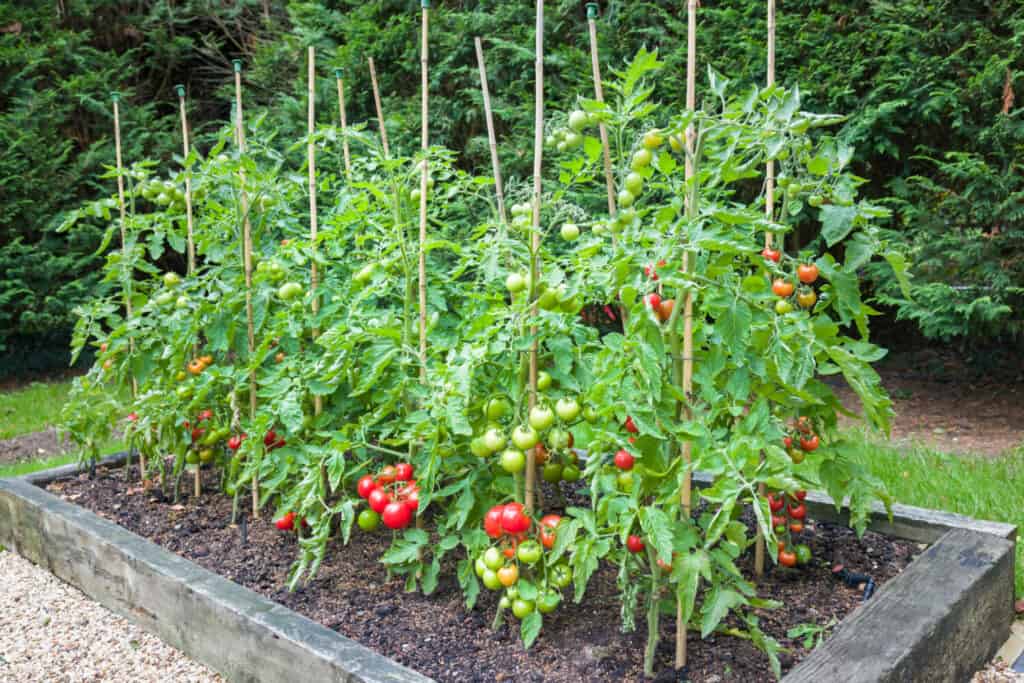
Given sufficient space and proper airflow, tomato plants will grow vigorously.
©Paul Maguire/Shutterstock.com
Thank you for reading! Have some feedback for us? Contact the AZ Animals editorial team.

